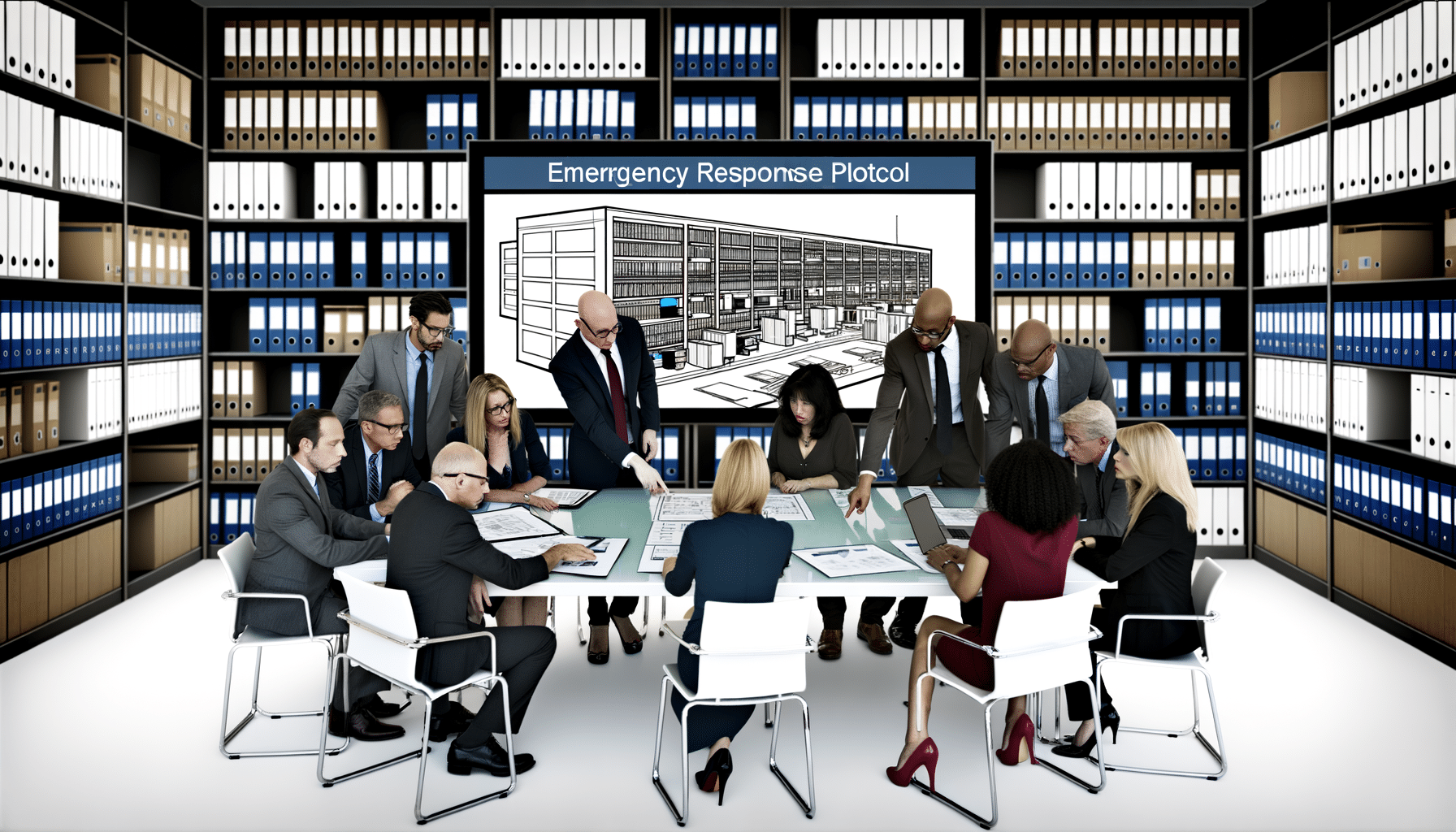- Risk Management
- November 17, 2024
Setting Up a Record Emergency Response Plan

Understanding the Need for an Emergency Response Plan for Records
In the dynamic landscape of modern businesses, having a robust emergency response plan, especially concerning records, cannot be overstated. The question of “what if?” lingers frequently in business continuity planning. What if a flood damages your vital records? What if a cyber-attack compromises the integrity of your data? These scenarios, although daunting, are not uncommon. As someone deeply involved in the records management field, I’ve come to understand the profound importance of preparedness. My goal is to guide you through the creation of an emergency response plan that safeguards your precious records from unexpected threats.
Identifying Potential Threats
The first step in setting up an emergency response plan for records is understanding the various threats that could jeopardize your records. Whether it’s natural disasters like fires and floods, or human-induced threats like hacking or data breaches, recognizing these threats makes planning proactive.
- Natural Disasters: Earthquakes, floods, and hurricanes can hit any time without warning.
- Cyber Threats: With increasing reliance on digital records, online threats pose a significant risk.
- Human Error: Unintentional mistakes can cause grave harm, from accidental deletion to misplacement.
Documenting Critical Records
Before a crisis hits, it’s crucial to identify and document what constitutes a ‘critical record’ for your organization. Typically, these include anything essential for operational continuity and regulatory compliance. Creating an inventory should be a prioritized task in your emergency response strategy.
Pro Tip: Make a list and categorize records based on their importance and create a hierarchy.
Backups: The Safety Net
Implementing frequent and reliable backup mechanisms is the backbone of any emergency plan for records. I always emphasize automated backups, as they reduce the risk of human oversight. At RecordsKeeper.AI, we offer seamless backup solutions that ensure that your data is safely stored and can be easily retrieved.
Integrating Technology: AI and Blockchain
The advent of AI and Blockchain has transformed how we handle records. Incorporating these technologies in your response plan can significantly enhance your operational resilience.
- AI: Automates categorization and retrieval, saving precious time during emergencies.
- Blockchain: Provides a tamper-proof ledger for your records, enhancing their authenticity and integrity.
Testing and Simulation
Once your emergency response plan is ready, the next logical step is testing it through regular drills and simulations. A plan on paper is good, but a plan put into practice is better. By running simulations, you can evaluate the plan’s effectiveness and make necessary adjustments.
Remember: It’s not just about having a plan but ensuring that the plan is actionable in real scenarios.
Training Employees
An often overlooked aspect of emergency preparedness is employee training. A well-informed workforce can act swiftly and decisively when emergencies arise. I recommend conducting workshops and training sessions where employees are educated about their roles in safeguarding records during crises.
Communication Strategy
Effective communication is critical when an emergency strikes. Establishing clear communication lines and protocols ensures that all team members and stakeholders are informed promptly. This aspect can make or break the effectiveness of your response.
Reviewing and Updating the Plan
Continuous improvement is essential in risk management. An emergency response plan must be reviewed and updated at regular intervals to adapt to new threats and technological advancements. Incorporating feedback from drills and real incidents can make your plan more robust.
Conclusion
Preparing for emergencies is not an option but a necessity. By implementing a diligent emergency response plan for records, you fortify your organization against unforeseen challenges. The journey demands time and effort, but the security it offers is invaluable. As I continue to steer RecordsKeeper.AI towards innovation, my priority remains aiding others in navigating the intricacies of records management. For more insights into risk management and technological innovation in record keeping, feel free to explore further.
Call to Action: Stay informed with more actionable insights by following my journey, and let’s continue to transform how we manage records for a safer tomorrow.
Toshendra Sharma is the visionary founder and CEO of RecordsKeeper.AI, spearheading the fusion of AI and blockchain to redefine enterprise record management. With a groundbreaking approach to solving complex business challenges, Toshendra combines deep expertise in blockchain and artificial intelligence with an acute understanding of enterprise compliance and security needs.
Related Posts

Quick Tips for Records Emergency Recovery
Handling record recovery after emergencies.
- November 17, 2024

Automating Compliance Risk Monitoring
Implementing automated risk monitoring with AI technology.
- November 16, 2024
Archives
- December 2024
- November 2024
- October 2024
- September 2024
- August 2024
- July 2024
- June 2024
- May 2024
- April 2024
- March 2024
- February 2024
- January 2024
- December 2023
- November 2023
- October 2023
- September 2023
- August 2023
- July 2023
- June 2023
- May 2023
- April 2023
- March 2023
- February 2023
- January 2023
- December 2022
- November 2022
- October 2022
- September 2022
- March 2019
Want to get more content like this?
Signup to directly get this type of content to your inbox!!
Latest Post
Organizing External Auditor Access
- December 22, 2024
Document Control in Manufacturing Plants
- December 21, 2024
Handling Rush Financial Report Requests
- December 20, 2024
Managing Record Access After Staff Changes
- December 19, 2024





